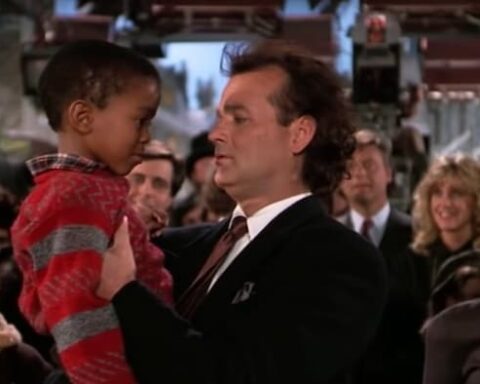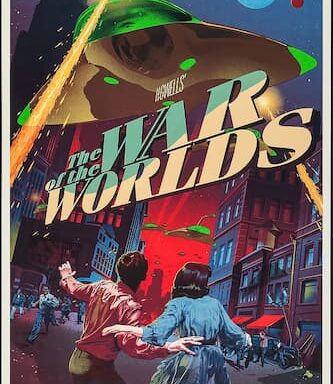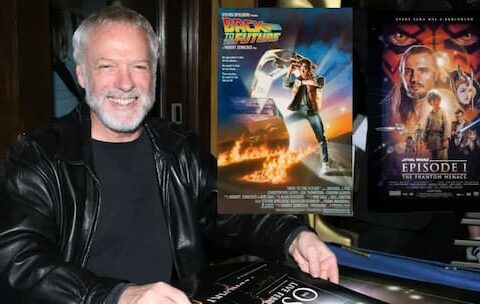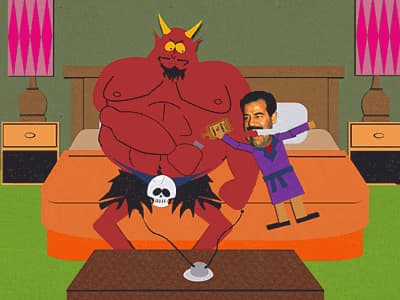My original – and admittedly very long – review of The Force Awakens was fair and balanced, highlighting and celebrating the positives and bringing to light what I viewed as the negatives too.
I was wholly aware, however, that my reaction to the movie at that time was raw and incomplete: and that I would need to give it some time and see what I felt down the line.
As it happens, after now my fourth (or fifth – I can’t remember) viewing, my initial reaction and my current reaction are mostly the same.
What works about TFA still works and what doesn’t still doesn’t; what was wonderful is still wonderful, and where it fell short it still falls short.
The main difference is that, watching the movie later, I’m not carrying the baggage or being driven by an emotional response: and I could enjoy the film a lot more innocently and freely than at first.
I actually enjoyed TFA more the second and third time I watched it than the first back in December 2015 – this might’ve been partly because I had rewatched Revenge of the Sith just a few days before seeing TFA in the cinema and it was difficult adjust from the scale and ambitiousness of ROTS to the comparatively low-key, small-scale style of TFA.
There’s so much to like in this movie, so much that the filmmakers got right, that it is very difficult to dislike: and yet every time I watch it I also perceive that there is something lacking in it, something missing.
And that something missing is probably the visionary spark and imagination of George Lucas. Conversely, what this also means that we don’t get any of the tonal misjudgements or scripting mishaps of Lucas either. So, apples and oranges.
This is probably as good a film as we could’ve got within the given parameters of what had to be (1) a Disney-backed film to kickstart a new era of multiple Star Wars movies (one every year, we’re being told) in the vein of the Marvel Cinematic Universe – in other words a Star Wars industrial conveyor belt, (2) an easy-to-process, simplified formula and story for mass appeal beyond the pre-existing Star Wars fandom, (3) a film that is compliant with contemporary, generic formula and practises (unlike the prequels, which followed a very different, unique vision), and (4) a film that is as far away as possible from The Phantom Menace (because most people seem to not like The Phantom Menace).
Given that (1) they had to make a film that would appeal to as many people as possible in order to create and sustain interest in what will now be a prolific franchise machine, it is no surprise we ended up with a film that didn’t take too many risks on imagination or innovation, that relied heavily on paying homage to plot devices or even specific scenes from the Original Trilogy.
The story and the galaxy it takes place in is somewhat dumbed down, very small, with the broader backdrop largely ignored or unexplored.
In (4) trying to get as far away from The Phantom Menace as possible, TFA manages to avoid any embarassments of the Jar Jar or Neimodian kind and there are no “yipee” moments.
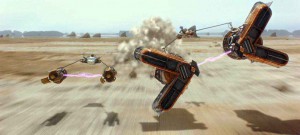
A side effect of this, however, is that it has almost nothing in it that is as jaw-dropping as some of the best parts of TPM.
Another is that it fails to present a coherent picture of the galaxy, the politics and the dynamics of this post-ROTJ era – which, ironically, is one thing Lucas didn’t fail to do in The Phantom Menace, but which lots of people subsequently complained about (as in, the “boring politics” of Episode I).
But, given how difficult a prospect it was to revive the Star Wars franchise without Lucas, introduce a whole new set of characters while bringing back the original heroes, TFA does a remarkably good job, managing not just to establish the new generation of Star Wars, but to be entertaining, fun and engaging at the same time.
And what’s more, it is only the first film – and we can assume even better is to come in the next two, which are now rich with possibilities.
As far as TFA on its own is concerned, the script is still solid, the new characters are very well established, Rey/Daisy is a joy, and there are some genuinely great moments in TFA. The Rey/Kylo lightsaber duel in the snowy forest is beautifully shot and nuanced, a really stunning piece of cinematography.
The early Rey stuff on Jakku is generally superb – tonally, thematically and visually.

Rey and Finn are a breath of fresh air. BB8 is genuinely the cutest thing in Star Wars since the Pit Droids from Episode I. Kylo Ren is a genuinely interesting, engaging new character. I like Maz Kanata. Crucially, even the opening sequence of the film is superb in terms of pacing, tension and visualisation.
On the other hand, Snoke sucks – so far, at least; face it, he’s just the MCU Thanos reworked for the Star Wars universe. The First Order is still odd. The galaxy is vague and difficult to work out.
And yes, seeing Luke at the end is magic – even if they overdid it a little with the helicopter shot.
And yes, that Nazi salute the Stormtroopers do is just completely baffling and takes me out of the story completely, reminding me that none of this is real – which is not what you want in a Star Wars movie.
Yes, George already said that the OT Imperials were basically modelled on Nazi Germany – but he did it subtly: you don’t need a Nazi salute to hammer the point home and break the fourth wall.
The politics and world-building is non-existent, and there are too many lazy, by-the-numbers reworkings of Original Trilogy ideas. It is, in many ways, a lazy film that Disney played safe.
Much of TFA is simply homage – and in some cases just lazy rehashing – of the Original Trilogy.
At times, this works alright – at others, it feels lazy. The “here’s the original Death Star – and here’s the Starkiller base” scene is just about the worst culprit.
The lack of imagination also shows in scenes like Maz Kanata’s castle on Takodana – the exterior design is pretty cool, but the interior is really dull, even comparing it to equivalent scenes in just the OT and not even the prequels. The original Mos Eisley cantina scene is far more interesting and dynamic. Where Lucas would’ve had a field day with a sequence like this, this film seems to suffer either a lack of imagination or a lack of interest in that aspect of things.
The film does seem very small scale and almost claustrophobic after the scale of the prequels.
The galaxy seems very small. On some level, that works quite well, as the prequels were always meant to show us this grand, immense and rich cultural galaxy in its golden era – and Lucas himself made the point that then, when you go back to the Original Trilogy, “everything’s real small” and dull by comparison – by that point in the chronology, it’s no longer the worlds and settings that are fascinating, but it’s all about the characters and it’s our investment in Luke, Leia, Han and co that carries us through.
So, on that level, the smallness of The Force Awakens kind of works okay, being more focused on characters than backdrop.
And A New Hope was comparatively small-scale too compared to ESB and ROTJ; and if this new Disney trilogy is going to follow OT structure in the same way it recreates all the OT elements for TFA, then maybe the next two films will expand things a little more and give us something on the scale of Cloud City or Jabba’s Palace.
The other area in which Lucas’s absence is keenly felt is in the politics.
The politics of TFA just never really feel real or make sense. Popcorn enthusiasts could bitch all they want about the supposedly “boring politics” of The Phantom Menace, but Lucas knew how to establish situations, societies and institutions. You watch TPM and you know what the Republic is, where the Senate is, what the Jedi Order is, how the Jedi Order relates to the Republic, who the Naboo are, etc.
On the other hand, in TFA, it took three viewings before I understood that Hosnian Prime is – at this point in the story – the capital of the Republic when it is destroyed by the Starkiller weapon. But where is the Republic in general terms? How big is it? When did the ‘First Order’ come about? And how big is that?
And why is Leia supporting ‘The Resistance’ to fight the First Order? Why isn’t the Republic simply fighting the First Order itself?
After all, the New Republic could surely justify waging war against a faction trying to revive the Galactic Empire? I mean, I’m not even sure what the Republic is at this point in time. This film is so small-scale and so sparse in details and background information that I really don’t have a clear sense of what’s going on in the galaxy. Is the First Order a small, localised problem or is it a galactic problem?
I’m also not sure if it was necessary, in story terms, to have ‘The Resistance’ exist at all: but, as I said, just have the New Republic and the First Order.
In fact, I would’ve simply called the First Order ‘The Resistance’ – and the fight be between the Resistance and the New Republic. That makes immediate sense – a ‘resistance’ to the New Republic. This would also work thematically by inverting the OT dynamics where we had the ‘rebellion’ to the Empire; and would thus fit in with the general ‘inversion’ theme underlying much of the movie (as in the Han/Kylo scene being an inversion of the Vader/Luke Bespin scene, for example, or Kylo’s struggle to resist the Light being an inversion of Luke’s struggle to resist the Dark).
The Starkiller base, which has divided a lot of fans, is something I’m more and more okay with the more I see it. It’s still a lazy idea, and the “here’s the original Death Star and now here’s a BIGGER Death Star” scene is – as previously stated – possibly the most irritating scene in the whole movie. But the climatic sequence on the Starkiller planet, combining Han’s death and Rey’s fight with Kylo with the Reisistance’s X-Wing attack on the base, is visually so engaging and compelling that I end up just being okay with the concept and the science (best not to think about the science – this isn’t Star Trek; although, come to think of it, a lot of the Starkiller stuff does look like the Abrams Star Trek).
Indeed, there are visuals in this movie that look like carbon copies of visuals from the 2009 Star Trek reboot movie.
The one main opinion that I have now revised after subsequent rewatches is regarding Han Solo.
The more I watch that particular scene, the more I come to appreciate that it is very well executed. Directorially, and in terms of tone and lighting, camera work, it is an absolute standout: but also in terms of theme, dialogue, emotion and psychology, it is also a fascinating, poignant sequence.

I still don’t like that, having been killed, Han just drops into an abyss – we would’ve been far better served (as would the character of Han Solo) if there had been a body to bring back to Leia. And I maintain that Lucas would’ve done something better, more fitting, with this aspect of it; but it is still a very good, very powerful scene. Abrams’ use of dramatic lighting and staging in this sequence is extremely potent; the way the lighting alters throughout the scene, reflecting Kylo Ren’s inner struggle, before finally settling on a stark red tone right before Kylo kills his father.
That death scene is genuinely superb in most respects.
The characterisation of Solo in general is handled terrifically, and I appreciate and love that we get this one last Han Solo adventure; and that his death is so significant in establishing Kylo Ren as a character and passing on the torch to the new generation of characters.
TFA is a really great Han Solo swan-song and Harrison Ford is absolutely perfect, really bringing those Han Solo traits and features we’re so familiar with right back to the screen.
This is totally the Han Solo we knew and loved; and yet not too – because this is an older, more tired and bruised Han Solo, bitter about how things have turned out and quite possibly having lost the will to live. It is still debatable whether or not he was totally willing for his son to kill him – but my perception is that he was wilfully sacrificing himself.
I’m not sure if that’s a good thing; like a lot of what may now come, it could ultimately undermine and do harm to the existing Star Wars films and Han Solo.
It’s pretty grim: and is one of the reasons I was always hesitant about new Star Wars films and had argued that Return of the Jedi remained the best possible end-point for the Star Wars saga and these characters.
But the scene itself, as I said, is superb: it just took a couple of viewings to properly get it in its fullness.
The climatic Luke/Rey scene still feels a little awkward in the way its presented; but the sheer emotion and undercurrent of that scene and its significance to us tends to override the clunky execution.
One obvious additional thing that has changed since I first saw TFA is that the Leia scenes – ever since Carrie Fisher passed away – are even more emotional now, particularly the first one.
I maintain my initial position from when the Disney acquisition of Lucasfilm was first announced – I don’t want or need to see Leia as an old lady, don’t need to see Luke as a bitter failure and don’t need to see Han Solo being impaled by his son and dropped into an abyss.
But, given that I have no choice in the matter, I do admit entirely that some of these scenes do prod at me emotionally.
As I said at length in my first review, I liked Rey a lot: which is important, as she is so crucial to the whole film.
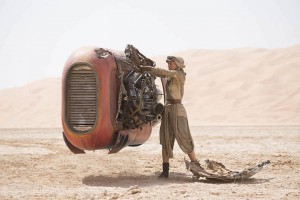
I’ve seen a lot of complaints about Rey online. And I kind of get it; even though I actually like her. But when I think about it, I’m not sure that its Rey the character that I like – it might be more what Daisy Ridley brings to the role.
In other words, Rey’s character and her story – if read on paper and not seen on screen – might not read anything like as well as it does when we’re watching Daisy play the role.
The early, establishing scenes of Rey on Jakku are still fabulous and really establish her beautifully, in keeping with that ‘silent movie’ quality that Lucas always talked about – whereby everything is expressed in imagery and tone and doesn’t need dialogue.
My own theory about all of this is something I’ve laid out at length here – and so I won’t go over it again: but the theory, basically, is that Rey and Kylo are both carrying the ‘Force Consciousness’ of Anakin Skywalker. I believe that if you watch The Force Awakens with this idea in mind, it becomes more and more compelling, with clues to this sprinkled throughout the movie (read ‘Star Wars Reincarnation Theory – Anakin, Rey, Kylo & The Force Awakens‘).
Disney and co could make things a lot easier, however, by abandoning their ‘The Prequels Don’t Exist Anymore’ policy and just saying ‘yes, it’s the midi-chlorians’ (which, if they do so in the next film, will make me very happy).
I still ultimately won’t be able to judge how good TFA is in relation to other SW films until several years have passed and we can judge in full context.
And I still maintain that in some respects The Phantom Menace is a better Star Wars film (even if TFA is a better film in a more generic and contemporary sense); in other ways, TFA is clearly the better film.
The difference is in scale, vision and imagination: TPM is just in a different league when it comes to imagination, artistry and vision, while TFA excels in all the areas where TPM failed – script, acting and pacing – but fails in the areas where TPM thrived.
For me though, my experience with Episode 7 is the opposite to a lot of other people’s: specifically, a lot of people raved about it at the time, even calling it the best or second best Star Wars movie, but now think it isn’t that good (some of them even hate it – and I’m pretty sure some of the people who now hate it were the same people who originally thought it was amazing).
I, on the other hand, didn’t love it as much as everyone else at the time it came out, but have come to like it more and more as time has gone on.
And I already liked lots of things about it from the start anyway.
It is essentially about as good a film as it could’ve been: and it shines on multiple, key levels. In some respects, it’s probably even a better film than A New Hope.
And it bodes well for Episode 8. I’m nervous for Luke Skywalker; I’m even more nervous for Leia and what will obviously be her swan-song. But The Last Jedi is where this story is going to move on from the initial ‘homage’ phase and into something new and uncertain. That’s exciting; and also a little unnerving.

